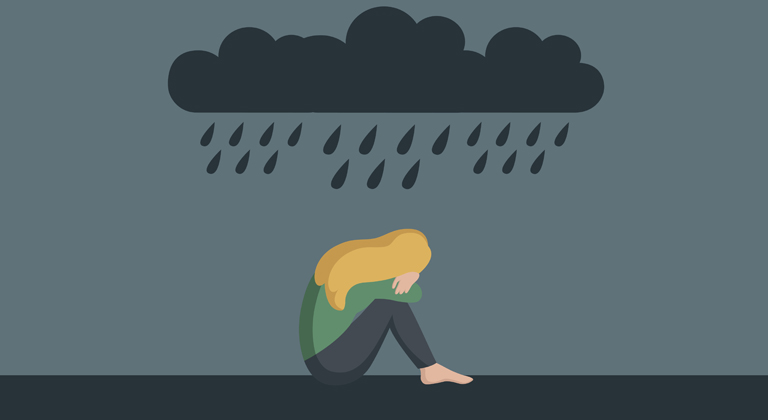Designing books from the outside in
One of the greatest pieces of writing advice authors rarely follow is: “Write the blurb before the book.” Why should we do that? Because blurbs condense the concept of a novel into a few short paragraphs – and focusing on the killer hook is what can deliver a book that leaves a lasting impression.
Unfortunately, it’s not as easy as it sounds which is why the advice is rarely followed, but this week Ginger is diving into the subject to help explain the concept and why it’s important that even if you don’t follow it to the letter, you can still benefit from the idea.
Blurbs sell books. That little three-or-four paragraph “details” section on your Amazon Product Page is ultimately one of the most influential factors in whether or not a potential reader clicks Buy Now when they land on your book page. Your blurb can make all the difference between a best-seller and a flop, and I speak from experience in that regard. I’ve seen my sales double after tweaking a few words in my blurbs.
But writing blurbs isn’t easy. In fact, that’s why I get hired by other authors to do it for them. It’s not that these authors aren’t incredibly accomplished writers themselves. It’s just that the skills needed to write a short, three-or-four paragraph blurb are very different to the skills needed to write a full-length novel. It’s more akin to copywriting than anything else – and what I bring to the table that other authors don’t necessarily have is two decades of experience as an advertising copywriter.
The problem most authors face when struggling to write their blurb is that they don’t necessarily know what the book is “about.” Obviously, their book is about something – but authors are often too close to their own work to be able to clearly see what that “about” is.
And that “about” is everything. It’s the hook that grabs a reader’s attention, and forces them to thumb through the pages. It’s what they use to recommend the book to other readers. The hook is the very fundamental concept of the book – and it’s King.
Concept is King
Think of some of the movies and books you love the most, and then think of the concept behind them. Normally it’s something simple, easy to describe to other people, and utterly captivating. You could call it your “elevator pitch” if you want – a term to describe being able to describe the concept in the time you’d share an elevator ride with somebody.
A great example is the concept behind Gillian Flynn’s 2012 novel Gone Girl, which has a really compelling concept behind it:
Nick and Amy seem to have an idyllic marriage, until Amy mysteriously disappears. As Nick tries to figure out what happened to her, the police and media read Amy’s diary entries and are led to the conclusion that he might be her killer.
What makes this concept work is that it’s short and easy to explain, yet it also raises questions that compel a potential reader to learn more. We’re led to believe that Nick is innocent, because otherwise why would he by trying to find his wife? But, at the same time, we’re told that evidence Amy provided herself paints him as her killer. Which is true? You almost can’t help but grab the book to find out the answer!
A strong concept also sells books – and there’s no better evidence of that than Andy Weir’s 2009 science fiction novel The Martian.
Today, The Martian is considered one of the best science fiction novels of the noughties, and led to a fantastic movie starring Matt Damon. However, the book was originally rejected by multiple literacy agents and Weir originally self-published it on the Amazon Kindle just like the rest of us.
The difference was – his book had a killer hook.
Astronaut Mark Watney was the first person to walk on Mars. Now, after being stranded on the planet, he’s likely to become the first person to die there, too.
Mark was abandoned on Mars by his comrades, and survival seems impossible. However, by embracing the philosophy of “science the shit out of it”, this brilliant botanist is determined to defy the odds.
There are many great things about The Martian as a book (Mark becomes the first colonist on Mars, and the first “space pirate”) but it’s that concept which really grabs a reader’s attention – a lone man stranded on a planet 218 million miles away from home. The compelling question how how to get Mark back home led to Weir’s book selling 35,000 copies within the first three months of publication (and educating a lot of literary agents about how important it is to give authors like him a chance!)
A simple, compelling concept is so powerful – and what’s really exciting is that Andy Weir’s example isn’t isolated. In fact, the same thing can happen to your self-published book, if your concept is good!
That’s the most amazing thing about the state of the publishing industry today. We have a perfect example in the form of author Jennifer Millikin (who we interviewed here.) She had an incredible concept for a book and managed to reach a massive audience with it thanks to TikTok. As a result, her four-year-old book became an instant #1 bestseller and was optioned for a movie.
Having a killer concept for your self-published novel is what gives it a shot at becoming a life-altering success – and one way to come up with a great concept is to write your blurb before you write your book.
Blurb Before Book
For most authors, the idea of writing the blurb before the book sounds completely crazy – and perhaps it is. This is why I describe it as the best piece of advice nobody ever follows!
After all, most of us write our books because we’re inspired by the characters and the story we’ve conjured up inside our heads. Part of the magic of writing is in locking ourselves away and entering this fictional realm – translating it to the written word almost as if we’re living it.
Some of us writers are plotters – we plot our books out meticulously, perhaps using a method like the Story Circle. Others are pantsers. We “write by the seat of our pants” and how the story unfolds is often as much of a mystery to us as it is to our readers!
Which method is better is a hotly debated topic of debate – in fact, you can see us jump into it in an episode of the Fully Booked podcast called the Pantser vs. Plotter Throwdown! However, both follow the standard procedure of writing the book first and worrying about the blurb afterward.
But what if you did it the other way around?
After all, whether you’re a pantser or a plotter, you’ve probably got a vision for your book in mind before you even start writing it. You know the characters and the setting. You might even have a good idea about the ending. What you probably haven’t done yet is figure out what the concept of the book is and – most importantly – why it would appeal to readers.
And the advantage of doing that before you write the book is that you’ll then find yourself focusing much more on that particular element; ultimately giving your readers more of what inspired them to give your book a chance in the first place.
From Suicide to Love Triangle
I discovered the power of this approach when I wrote the twelfth book in my MC romance series, Nobody Rides For Free. The series itself has been fairly popular thanks to some books with especially compelling concepts behind them. However, for this book I’d written myself into a corner and needed certain things to happen before the next stage in the saga could continue. Stories that focus on plot rather than characters are often very dry and unengaging.
I call this the “Endgame” problem, based on Marvel’s massive Avengers: Endgame movie. That was a beast of a film because it had to wrap up plot threads from over a dozen prior movies, and feature no less than 36 different characters. Earlier movies in the series – just like earlier books in my MC romance series – had been easier to write because they focused on character-based adventures. Now it was the plot dictating what happened, rather than the characters.
Endgame solved that problem by having a concept that resonated with everybody: How could they restore all the people that had been “snapped” away by Thanos? Then, they narrowed the larger story into one that focused on the core, original Avengers.
In my case, I completed the entire book – a whopping 160,000 words in its original draft – and then struggled to come up with a blurb that described what it was “about”. It was only when I was writing the blurb that I figured out that the most compelling thread in this massive, epic book was actually a really simple one – about our heroine having to choose between one lover or another.
Once I realized that, I felt compelled to go back into the novel and completely re-write it, shedding 60,000 words from the length as I cut out all the story threads that didn’t help drive our heroine’s story forward. This is similar to how Avengers: Endgame featured all the characters it “needed” to, but only focused on the story of the core team.
If I had written the blurb first, I could have probably saved myself months of work and written a much better book because I’d have truly known what the book was about; and that’s why it’s advice I definitely share with authors struggling to write their own blurbs.
But will you do it?
That being said, there’s a reason I describe this as the best advice no author ever follows, because I don’t often follow that advice myself, even after having seen how effective it can be. Part of being a writer is thriving in the writing process, and writing your blurb first is a lot more organized than I’m generally willing to be.
(It’s why I’m not much of a plotter, either.)
However, the idea of writing the blurb before the book has inspired me to spend a LOT more time considering what the core concept of each novel will be before I write it. Asking myself what the book is about and coming up with a concise description to tell people has helped me craft much more compelling fiction, and I’ll urge all authors reticent to “write the blurb first” to at least consider how you’re going to package and sell the concept of your next book before you begin writing it.
Conclusion
So, do you agree? Have you ever taken an approach like this? We’d love to know your thoughts and experiences, so don’t be shy about telling us in the comments section below.












I actually write my blurbs first because I always want to make sure the next book is available for preorder and linked in the back whenever I release a new book. Inevitably that locks me in so I have to finish it! But yes it helps me to think about the next book and give a pitch for it a the end of the book about to release so I think it’s generally a good idea.